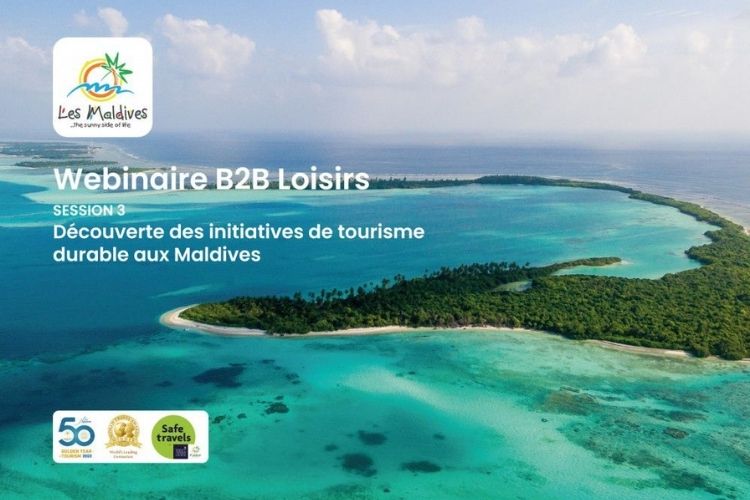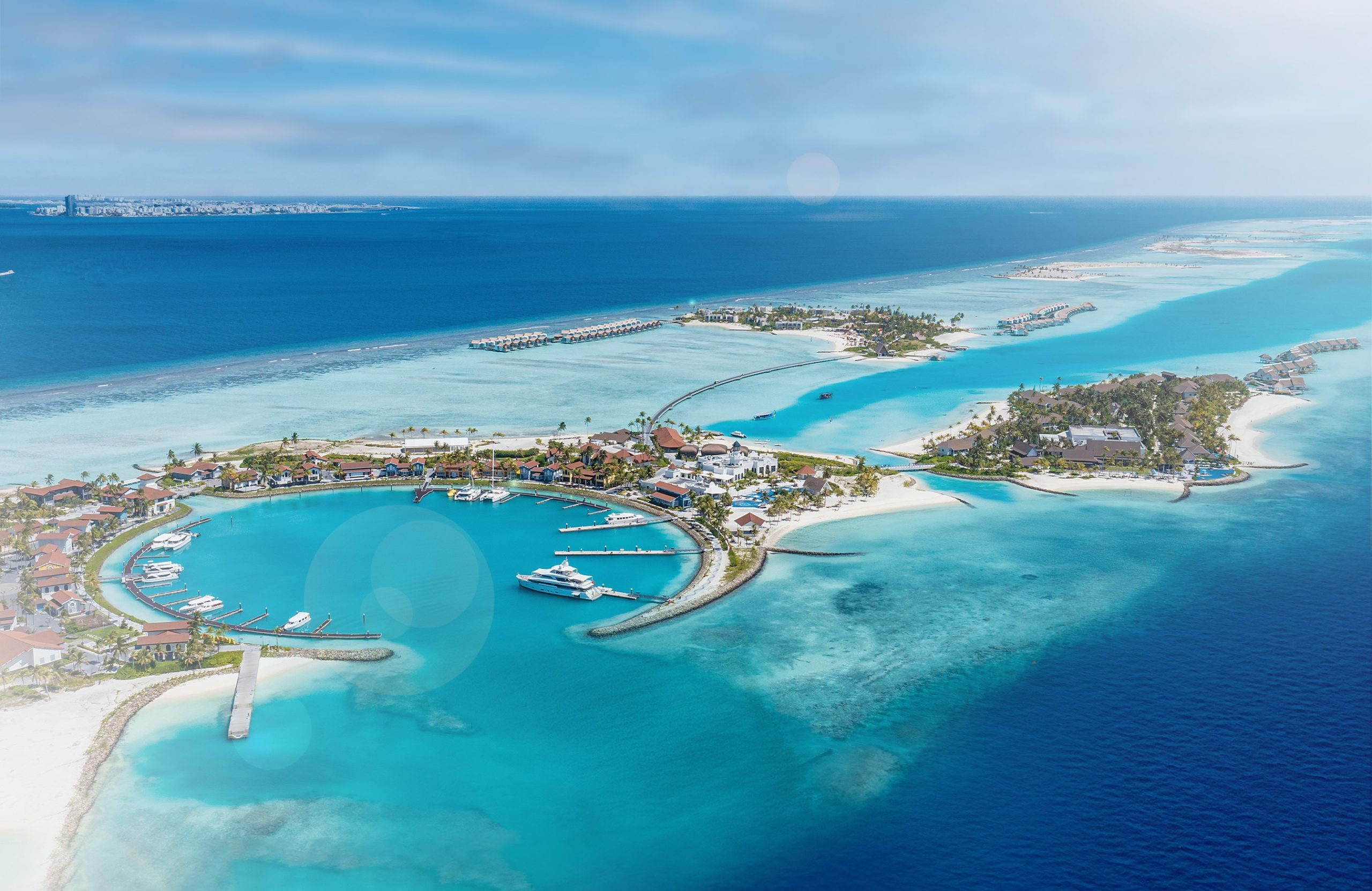Visit Maldives concludes a training webinar on Sustainability in the Maldives held for the France market. The webinar was held on 28th October 2021 on Zoom.
The training is held as part of a series of webinars conducted to provide travel agencies from France with the latest information about the destination and travel guidelines. It aims to market the destination as a safe haven, emphasizing the geographical advantage of our islands which allows natural social distance for tourists.
Through this webinar, Visit Maldives promotes individual products (resorts, guesthouses, hotels and liveaboards), informs the travel trade of the strict measures in place at tourist facilities to ensure the safety of travellers. The first two sessions of this training webinar were held on Visit Maldives virtual platform earlier this year.
The 3rd session of this webinar series was conducted on the theme of Sustainability in the Maldives. It focused on informing the travel trade from France about the priority given by the Maldives to ensure sustainable practices in the tourism industry.
Industry partners Reethi Beach, Dhigali, Grand Park Kodhipparu & LUX* South Ari joined Visit Maldives during this 60 minutes webinar to inform the travel agents from France about the sustainability efforts of the Maldivian tourism sector, particularly the efforts put in place by these individual properties. Over 70 travel agents from France participated in this session during which a Q & A session was also conducted.
As of 22nd October 2021, Maldives has welcomed 962,490 to the country, out of which 1.8 percent or 17,640 tourists were from France. The country currently ranks as the top 10th source market to the Maldives. Visit Maldives has been holding several activities to maintain destination momentum, increase bookings and arrivals from this market.
France has remained as the top 7th source market to Maldives consecutively for the past two years. In 2019 Maldives welcomed a total of 59,738 tourists, contributing 3.5 percent to the total arrivals. In 2020 France contributed 5.0 percent of the total arrivals with 28,031 tourists visiting the Maldives that year.







